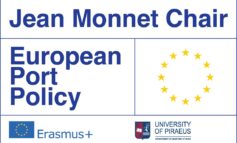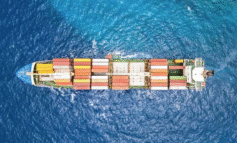 Prepared by PortEconomics members Thanos Pallis, UNCTAD’s report “Covid-19 and maritime transport: Navigating the crisis and lessons learned” describes how the COVID-19 pandemic shocked the global maritime transport system and some of the key effects on the sector. It highlights challenges arising from the disruption across ports and hinterland connections and examines response and mitigation measures implemented by various stakeholders and considers. It sets out the key lessons that can inform and guide preparedness and resilience-building efforts in transport and logistics.
Prepared by PortEconomics members Thanos Pallis, UNCTAD’s report “Covid-19 and maritime transport: Navigating the crisis and lessons learned” describes how the COVID-19 pandemic shocked the global maritime transport system and some of the key effects on the sector. It highlights challenges arising from the disruption across ports and hinterland connections and examines response and mitigation measures implemented by various stakeholders and considers. It sets out the key lessons that can inform and guide preparedness and resilience-building efforts in transport and logistics.
The onset of the COVID pandemic in 2020 caused unprecedented disruption to maritime transport operations, impacting the smooth functioning of global supply chains. Vessel calls were highly volatile but overall trended downward. In tandem, global maritime trade contracted by 3.8 per cent in 2020 before bouncing back by over 3 per cent in 2021.
Challenges faced by global supply chains include shortages of raw material, lead time issues, blank sailings, port closures, reduced working hours, equipment and labour shortages, and truck and inland transport capacity constraints. These challenges weighed on the global supply chains and threatened to “undo” the decades-long efforts aimed at facilitating the free flow of trade and smooth supply chain operations.
To cope with the disruption and to continue to link supply chains and enable smooth cargo flows, key stakeholders in the maritime supply chain adopted several responses and risk mitigation measures. Among others, shipping carriers revisited their strategies while reconsidering the frequency of their services and adjusting the levels of maritime transport connectivity. Ports and other logistics-sector stakeholders sought to address challenges to business and operational continuity while, at the same time, maintaining the safety and the well-being of workers and the broader population. Commercial ships managed to secure continued access to ports all over the world and deliver the world’s food, energy, raw materials, and manufactured goods and components, including vital medical supplies.
The following elements proved crucial when navigating the COVID-19 disruption across maritime transport and logistics:
- Making use of international recommendations and directives, including regarding health and safety protocols.
- Being prepared and having protocols as well as emergency and operational/business continuity plans in place.
- Having an adequate organizational capacity, relevant know-how, and skills.
- Supporting workers and personnel, including by enabling remote working arrangements.
- Facilitating and prioritizing the flow of essential goods
- Enhancing cooperation between relevant stakeholders, including service providers and suppliers.
- Leveraging partnerships and international collaboration between actors of the maritime supply chain and other relevant stakeholders including government authorities and ensuring coordinated and concerted action.
- Enabling effective communications and implementing technology and digital solutions that reduce physical interaction, accelerate clearance procedures, and minimize paper-based processes.
- Improving hinterland transport connectivity and tackling physical and administrative bottlenecks.
Download the full reports via UNCTAD’s website.












